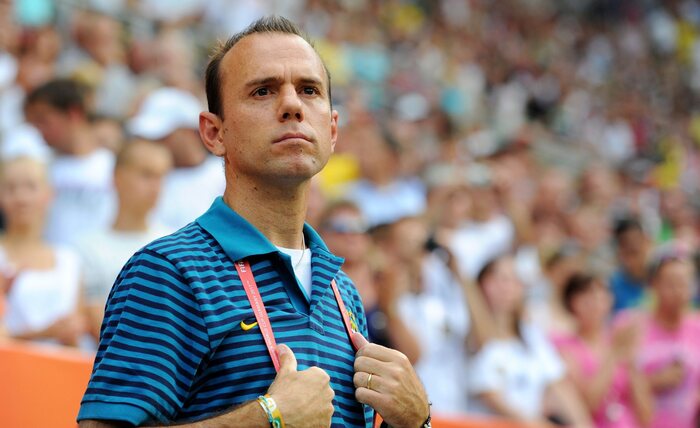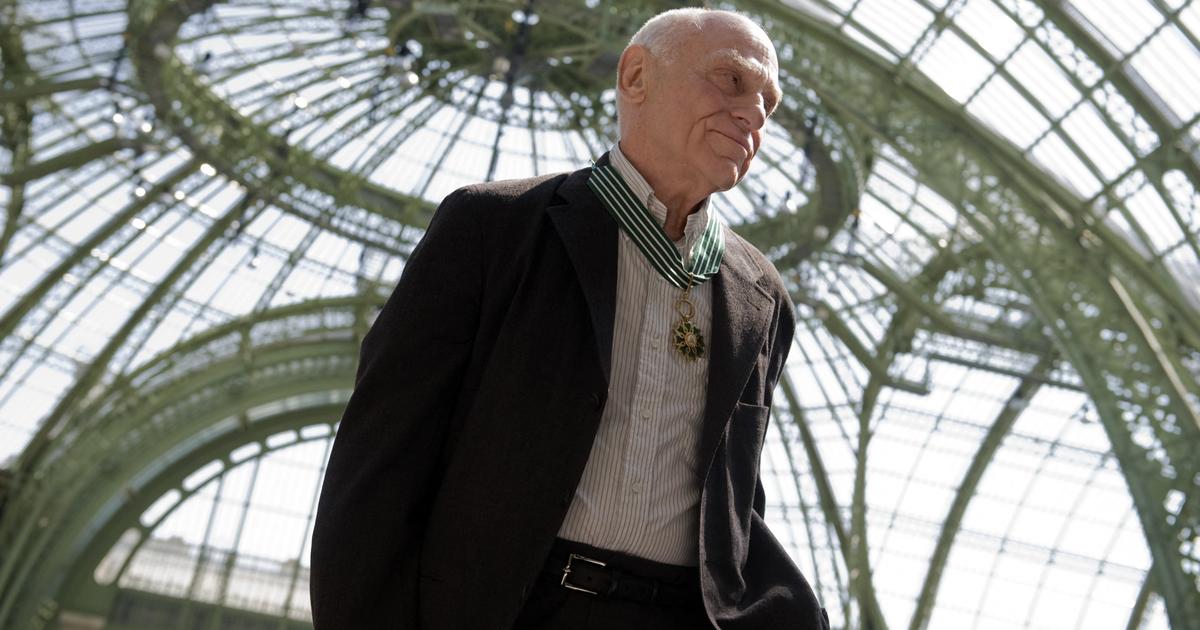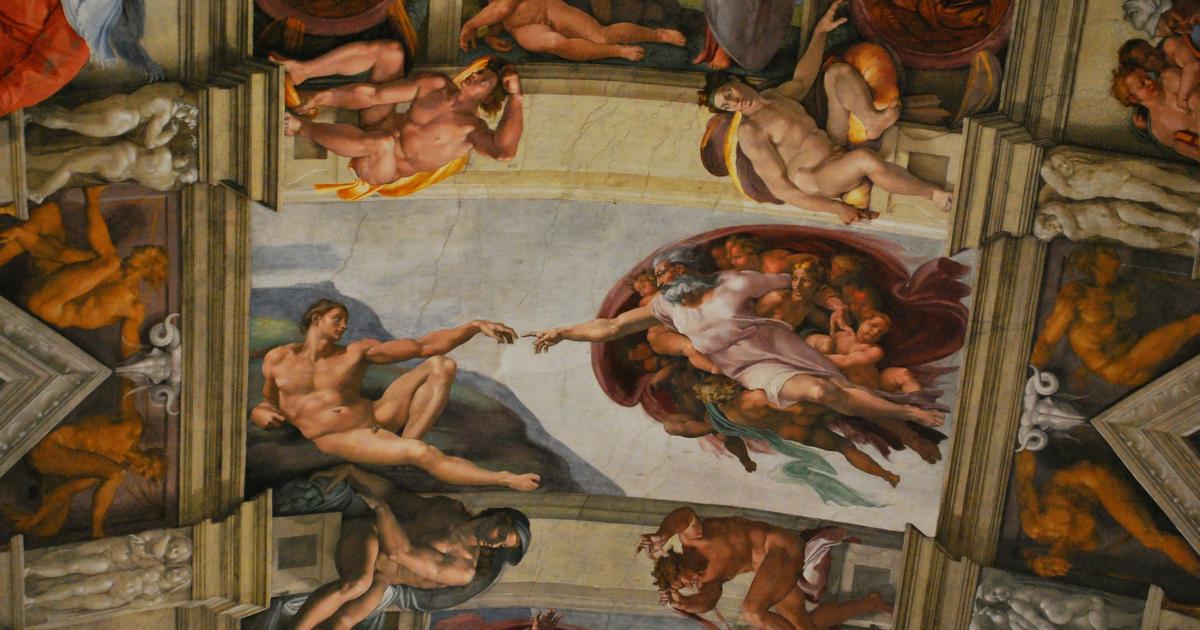Pelé was "crowned"
king of soccer
on February 26, 1958, before the first World Cup that he won for the
Brazilian team
, when the great chronicler and writer Nelson Rodrigues attended, perplexed, at the legendary Maracana stadium, a match in which Santos defeated América 5-3. Of Santos' five goals, four were scored by
Pelé
.
Rodrigues (1912-1980), also an exquisite playwright, wrote an entire chronicle about that match, which he titled "Pelé's royalty."
It was the first time that the three-time world champion with the Brazilian team, who died on December 29 at the age of 82, was called the "king of soccer."
"Alone, he settled the game and monopolized the result," Rodrigues wrote about the legendary soccer player.
“Watch out, he is definitely a genius.
Pelé can look at Michelangelo, Homer or Dante and greet them with an intimate effusiveness: How are you, colleague? ”, He portrayed him shortly after.
A throne with a crown as a tribute to Pelé, before a match between Santos and Mirassol.
Photo EFE/ Guilherme Dionisio
Over the years, Pelé would also be the first black Brazilian to establish himself as a global celebrity.
Pelé's exploits with Santos and with the team with which he won the World Cups in Sweden (1958), Chile (1962) and Mexico (1970) can be relived today with emotion in
three Brazilian cities
: Três Corações, his hometown from the state of Minas Gerais;
Sao Paulo and Santos, which hosts the club in which he played practically his entire career.
Three Hearts, Minas Gerais
Like many other players, Pelé was born into a humble family on October 23, 1940, in Três Corações, a town located in the
south of the state of Minas Gerais
, 392 kilometers from São Paulo.
Casa Pelé, in Três Corações, a town located in the south of the state of Minas Gerais.
Photo Embratur
His
birth house no longer exists
, but with the testimonies of relatives a
replica was erected in the same place
.
The address is easy to remember: 1000 Edson Arantes do Nascimento street.
Since its inauguration in 2012, Casa Pelé has been one of the
main tourist attractions in the city
.
The museography was in charge of staging the place where the star lived his first three years of life, and although the furniture is not original, there is a very realistic representation of domestic life, with replicas of objects.
What does survive Pelé is the jabuticaba tree, a fruit similar to the blueberry, at whose feet stands a statue of his mother Celeste pregnant with the future champion.
Relatively nearby, in Coronel José Martins square, is the
Terra do Rei Museum
, where visitors can enjoy a detailed account of Pelé's life, with innumerable facts about his origins, career, and successes.
Casa Pelé, in Três Corações, a town located in the south of the state of Minas Gerais.
Photo Embratur
The exhibition curatorship includes an important collection of photographic images, audiovisual material and personal objects such as shirts, shoes and balls.
Before entering the venue, visitors can take a photo at the “Monumento ao Tri”, a bronze statue of Pelé raising the Jules Rimet Cup after his victory in the 1970 World Cup in Mexico.
For the most fanatical, the visit to Três Corações is complemented by two other monuments: the
sculpture “Soco no ar”
(Blow in the air, named after the characteristic gesture with which the soccer player celebrated his goals), on the Fernão highway Days;
and another of Pelé in his childhood accompanied by his father, his Dondinho, called
Monumento Dondinho
, in the homonymous park.
Both the Casa Pelé and the Museo do Rei are open from Monday to Friday from 9 a.m. to 6 p.m., and on Saturdays from 9 a.m. to 1 p.m.
www.minasgerais.com.br/pt/atracoes/tres-coracoes/museu-pele
Saints, Saint Paul
A key point in Pelé's life was the city of
Baurú
, where he arrived as a child with his family and where he went through all the vicissitudes of the hero's path.
Pele Museum, Santos.
Photo Ken Chu, Secretary of Tourism Government Sao Paulo
For example, the precarious situation that forced him to earn a living as a shoeshine boy at the train station, or his adventures in the streets playing ball with other children, are narrated through the objects gathered in the
Pelé Museum
, in the middle of historic center of Santos, the country's important port located 78 kilometers from Sao Paulo.
Opened in 2014, the museum occupies the spaces of the old Casarão do Valongo building, a construction dating from 1867.
There are more than four thousand meters of permanent exhibition, based on a
timeline
, very well organized and that is complemented by gigantographies, audios and videos.
The collection of memorabilia includes a wax statue made by the Madame Tussauds team in 1991, and the boots she played in (and won) in the World Cup final against Sweden in 1958.
Among the most striking possessions in the exhibition are
the crown and the scepter
that were presented to Pelé on July 18, 1971, at the Maracana, when he played for the last time with the number 10 shirt of the Brazilian National Team.
Admission to the museum is free, from Tuesday to Sunday from 10 a.m. to 6 p.m.
www.instagram.com/museupele
Saint Paul
Pelé's glories are also honored at the
Soccer Museum
, located in the Pacaembú stadium in the capital of São Paulo.
Big room.
Pelé Welcome Video.
Photo Soccer Museum SP
Linked to the first three World Cups that Brazil won, the figure of Pelé is inescapable in the permanent exhibition area.
In the World Cup Room, some metallic meshes are displayed that support images and videos that pay
tribute to the athlete
, together with the rest of the winners of the five world championships obtained by Brazil.
Pelé is featured along with Garrincha in the space dedicated to extolling the
achievements of the 1960s and 1970s
.
Both players will always be an exclusive and glorious chapter because they never lost a game while playing together.
In this space, the museum exhibits its most important piece: the
shirt that Pelé
wore in the final against Italy in the 1970 World Cup in Mexico, with which he was crowned three-time champion.
The museum works from Tuesday to Sunday, from 9 a.m. to 5 p.m. On Tuesdays it is free and the rest of the days the tickets cost between 10 and 20 reais (from two to four dollars).
museudofutebol.org.br
look too
Access, requirements and recommendations: what you need to know to travel to southern Brazil by car
What is it like and where is São Miguel dos Milagres, the secret beach of Brazil















/cloudfront-eu-central-1.images.arcpublishing.com/prisa/IGZ7GOCXZ5GUPAQ2HWGK6Z76BU.jpg)